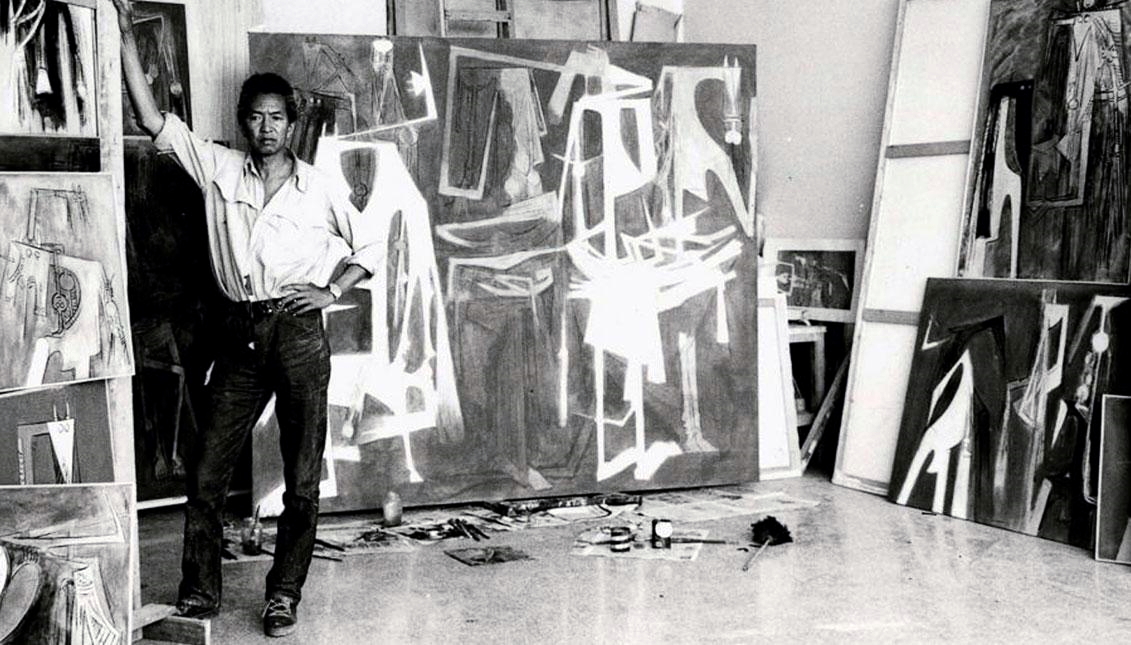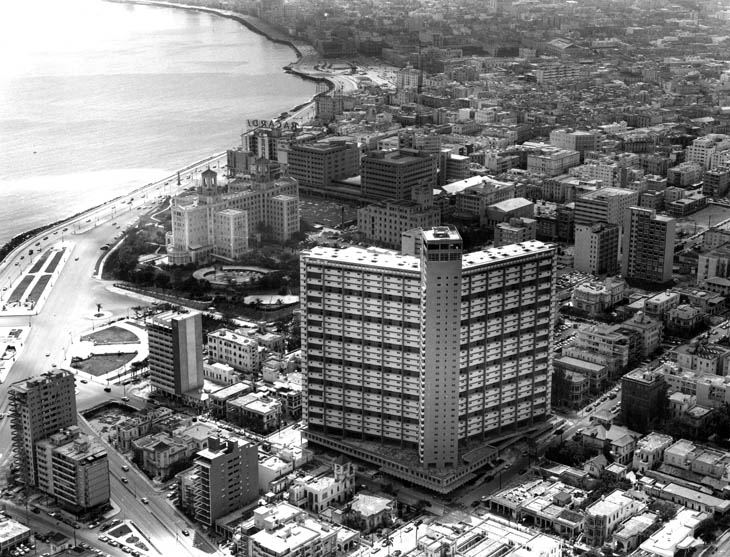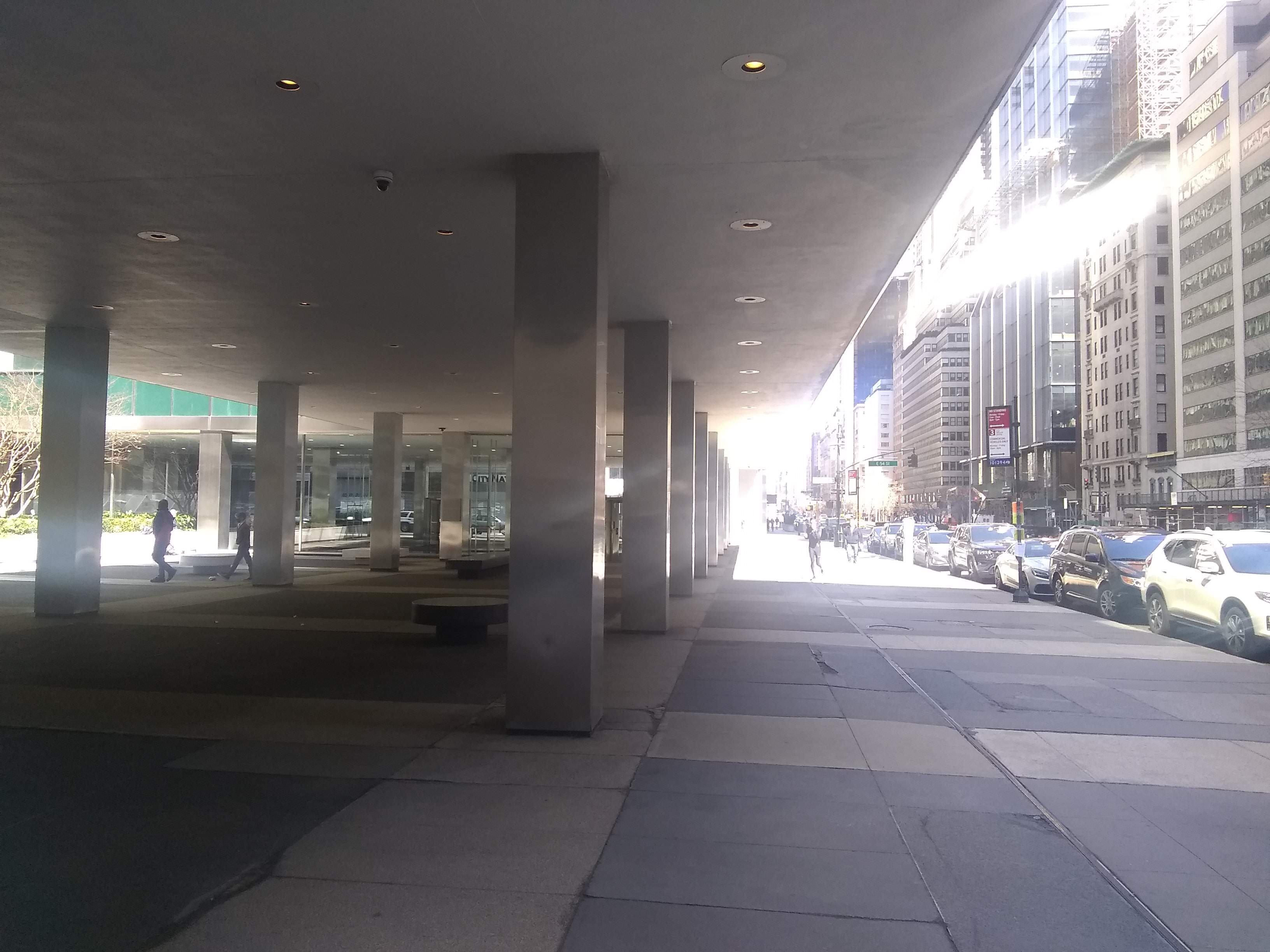|
Antonio Quintana Simonetti
Antonio Luis Quintana Simonetti (April 19, 1919 - September 21, 1993) was a Cuban architect and a forerunner of Modern architecture in Havana. Quintana graduated from the University of Havana in 1944, among his works are some of the most important modernist buildings in the capital. Dissatisfied as a student with the classical canons, Antonio Quintana participated in 1944 in the so-called "Burning of Vignola" in the courtyard of the School of Architecture of the University of Havana. From this date forward, he began to study the precepts of contemporary architecture. He graduated as an architect in the same year. History Early in his career, Quintana worked with Pedro Martínez Inclán and Mario Romañach in the ''Barrio Residencial Obrero de Luyanó'', a modernist project that consisting of 1,500 houses, eight apartment complexes in four-story buildings, and all the complementary services of the houses: markets, schools, sports fields, and parks. After the triumph of the Cuban ... [...More Info...] [...Related Items...] OR: [Wikipedia] [Google] [Baidu] |
Havana, Cuba
Havana (; Spanish: ''La Habana'' ) is the capital and largest city of Cuba. The heart of the La Habana Province, Havana is the country's main port and commercial center.Cuba ''The World Factbook''. Central Intelligence Agency. The city has a population of 2.3million inhabitants, and it spans a total of – making it the largest city by area, the most populous city, and the List of metropolitan areas in the West Indies, fourth largest metropolitan area in the Caribbean region. The city of Havana was founded by the Spanish Empire, Spanish in the 16th century, it served as a springboard for the Spanish colonization of the Americas, Spanish conquest of the Americas becoming a stopping point for Spanish galleons returning to Spain. ... [...More Info...] [...Related Items...] OR: [Wikipedia] [Google] [Baidu] |
1993
File:1993 Events Collage.png, From left, clockwise: The Oslo I Accord is signed in an attempt to resolve the Israeli–Palestinian conflict; The Russian White House is shelled during the 1993 Russian constitutional crisis; Czechoslovakia is peacefully dissolved into the Czech Republic and Slovakia; In the United States, the ATF besieges a compound belonging to David Koresh and the Branch Davidians in a search for illegal weapons, which ends in the building being set alight and killing most inside; Eritrea gains independence; A major snow storm passes over the United States and Canada, leading to over 300 fatalities; Drug lord and narcoterrorist Pablo Escobar is killed by Colombian special forces; Ramzi Yousef and other Islamic terrorists detonate a truck bomb in the subterranean garage of the North Tower of the World Trade Center in the United States., 300x300px, thumb rect 0 0 200 200 Oslo I Accord rect 200 0 400 200 1993 Russian constitutional crisis rect 400 0 600 200 ... [...More Info...] [...Related Items...] OR: [Wikipedia] [Google] [Baidu] |
Wifredo Lam
Wifredo Óscar de la Concepción Lam y Castilla (; December 8, 1902 – September 11, 1982), better known as Wifredo Lam, was a Cuban artist who sought to portray and revive the enduring Afro-Cuban spirit and culture. Inspired by and in contact with some of the most renowned artists of the 20th century, including Pablo Picasso, Henri Matisse, Frida Kahlo and Diego Rivera, Lam melded his influences and created a unique style, which was ultimately characterized by the prominence of hybrid figures. This distinctive visual style of his also influences many artists. Though he was predominantly a painter, he also worked with sculpture, ceramics and printmaking in his later life. Early life Wifredo Lam was born and raised in Sagua La Grande, a village in the sugar farming province of Villa Clara, Cuba. He was of mixed-race ancestry: his mother, the former Ana Serafina Castilla, was born to a Congolese former slave mother and a Cuban mulatto father and his father, Yam Lam, was a C ... [...More Info...] [...Related Items...] OR: [Wikipedia] [Google] [Baidu] |
FOCSA Building
The FOCSA Building is a residential and commercial block in the Vedado neighborhood of Havana, Cuba. At , it is the tallest building in Cuba. It was named after the contracting company ''Fomento de Obras y Construcciones, Sociedad Anónima'', and the architects were Ernesto Gómez Sampera (1921–2004), Mercedes Diaz (his wife), and Martín Domínguez Esteban (1897-1970), who was the architect of the Radiocentro CMQ Building. The structural engineer was Luis Sáenz Duplace, of the firm Sáenz, Cancio & Martín, and professor of engineering at the University of Havana. The civil engineers were Bartolome Bestard and Manuel Padron. Gustavo Becquer and Fernando H.Meneses were the mechanical and electrical engineers, respectively. It is located on a site bordered by Calles 17 and M and Calles 19 and N in the Vedado. History The building was built between 1954 to 1956, is 121 metres (394 feet), and located in the Vedado section of Havana.Fox, Arthur. “Concrete Apartment House 39 St ... [...More Info...] [...Related Items...] OR: [Wikipedia] [Google] [Baidu] |
Manhattan
Manhattan (), known regionally as the City, is the most densely populated and geographically smallest of the five boroughs of New York City. The borough is also coextensive with New York County, one of the original counties of the U.S. state of New York. Located near the southern tip of New York State, Manhattan is based in the Eastern Time Zone and constitutes both the geographical and demographic center of the Northeast megalopolis and the urban core of the New York metropolitan area, the largest metropolitan area in the world by urban landmass. Over 58 million people live within 250 miles of Manhattan, which serves as New York City’s economic and administrative center, cultural identifier, and the city’s historical birthplace. Manhattan has been described as the cultural, financial, media, and entertainment capital of the world, is considered a safe haven for global real estate investors, and hosts the United Nations headquarters. New York City is the headquarters of ... [...More Info...] [...Related Items...] OR: [Wikipedia] [Google] [Baidu] |
Lever House
Lever House is a office building at 390 Park Avenue (Manhattan), Park Avenue in the Midtown Manhattan neighborhood of New York City. The building was designed in the International style (architecture), International Style by Gordon Bunshaft and Natalie de Blois of Skidmore, Owings & Merrill (SOM) as the headquarters of soap company Lever Brothers, a subsidiary of Unilever. Constructed from 1950 to 1952, it was the second skyscraper in New York City with a glass curtain wall (architecture), curtain wall, after the United Nations Secretariat Building. The building contains 21 office stories topped by a triple-height mechanical section. The ground story contains a courtyard and public space, while the second story overhangs the plaza on a set of columns. The remaining stories are designed as a slab occupying the northern one-quarter of the site. The slab design was chosen to conform with the city's 1916 Zoning Resolution while avoiding the need for Setback (architecture), setbac ... [...More Info...] [...Related Items...] OR: [Wikipedia] [Google] [Baidu] |
La Rampa
La Rampa (also known as Calle 23) is a main street in the Vedado district of Havana, Cuba. La Rampa runs from Calle L to the Malecón. Built in 1930, the end was the location of the Battery of Santa Clara that protected the city from attack. Architecture Calle 23rd passes by airline offices, cinemas, nightclubs, and office buildings. Many hotels, clubs and shops crowd this stretch, such as Hotel Tryp Habana Libre, the former Habana Hilton, and the Hotel Nacional de Cuba. On the corner of 23rd and L is the Radiocentro CMQ Building and further down the block is the Edificio del Seguro Médico by Antonio Quintana Simonetti Antonio Luis Quintana Simonetti (April 19, 1919 - September 21, 1993) was a Cuban architect and a forerunner of Modern architecture in Havana. Quintana graduated from the University of Havana in 1944, among his works are some of the most import .... References External linksHabana Años 50 Calle 23 Vedado 1 de 2 [...More Info...] [...Related Items...] OR: [Wikipedia] [Google] [Baidu] |
Radiocentro CMQ Building
The Radiocentro CMQ Building complex is a former radio and television production facility and office building at the intersection of Calle L and La Rampa in El Vedado, Cuba. It was modeled after Raymond Hood's 1933 Rockefeller Center in New York City. With 1,650 seats, the theater first opened on December 23, 1947, under the name Teatro Warner Radiocentro, it was owned by brothers Goar and Abel Mestre. Today the building serves as the headquarters of the Cuban Institute of Radio and Television (ICRT). Construction For the construction of this building, the Havana building authorities granted a permit in 1947 amending the ordinances that were then in effect in El Vedado prohibiting the construction of buildings of more than three storeys. This statute was modified six years later to expand the construction of up to four floors because many planners and owners claimed the need to authorize them to build taller buildings in the area. The building was set back from the property lin ... [...More Info...] [...Related Items...] OR: [Wikipedia] [Google] [Baidu] |







